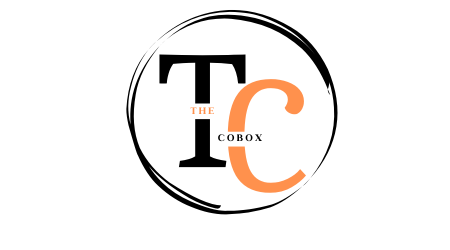Introduction
For 3D modelers, game developers, creators, and animators, efficiency and compatibility play a critical role in producing quality content. That’s where SFM compile steps in as a game-changer. It’s an essential process that allows creators to customize models and animations, optimize rendering, and greatly improve workflow.
Whether you’re a seasoned professional or a design enthusiast exploring the field, SFM compile offers unmatched flexibility, saves time, and ensures smooth collaboration across platforms. This guide is here to unpack everything you need to know about SFM compiling, including its advantages, how to use it, success stories, and emerging trends.
Understanding SFM Compiling
What is SFM Compiling?
SFM, or Source Filmmaker, is a popular application for creating animated movies, primarily using Valve’s Source engine. SFM compiling refers to the process of preparing and converting raw models, animations, and assets into a format that is compatible with Source Filmmaker.
This involves packaging models, materials, textures, and animations into formats that SFM can handle efficiently. SFM compiling ensures that these assets are optimized for performance while maximizing their quality.
How Does SFM Compiling Work?
The process starts by organizing your raw assets. Tools such as Crowbar and StudioCompiler are used to compile asset files (e.g., `.smd` and `.qc`) into the native Source Engine format like `.mdl` files. This ensures compatibility for use within SFM. SFM compiling also includes steps like assigning shaders and testing animations to create a seamless output.
Why is SFM Compiling Important?
- Customization: Creators can tweak models to suit their vision, whether adjusting textures, animations, or materials.
- Optimized Rendering: By reducing load times and ensuring assets are render-friendly, performance improves significantly.
- Compatibility: Compiling assets ensures compatibility across different software platforms and Source Filmmaker versions.
Advantages of SFM Compiling
1. Reduced Load Times
With SFM compile, creators can optimize files by removing unnecessary data and compressing large assets. This speeds up rendering and allows the software to handle more complex scenes without lag.
2. Enhanced Compatibility Across Platforms
Whether you’re collaborating with team members using different SFM versions or transitioning assets into other Source Engine-based platforms, compiling ensures assets remain functional and consistent across the board.
3. Smoother Collaboration
With standardized and optimized files, multiple creators can work on the same project without encountering compatibility issues. This is vital, especially for collaborative projects involving animation studios or game development teams.
4. Streamlined Workflow
Organized and compiled assets eliminate confusion and reduce errors during production, enabling creators to focus on innovating rather than troubleshooting.
How to Utilize SFM Compiling
Step-by-Step Guide for Beginners
- Gather Your Assets: Organize textures, models, and animations. Use editable file formats like `.obj` or `.fbx` for the initial creation phase.
- Install Tools: Tools like Crowbar or Blender Source Tools will help convert and compile your files.
- Write a QC File: This is a script-like file that specifies how your model should be compiled, including skeletal structure and animations.
- Compile Your Model: Use Crowbar or StudioCompiler to transform assets into `.mdl` and other related formats.
- Test in SFM: Load the compiled assets into Source Filmmaker to ensure they perform as expected.
Advanced Tips for Experienced Users
- Animations Optimization: Refine skeletal animations to reduce memory usage and improve playback.
- Material Shading: Use Source shaders to enhance model aesthetics for better cinematic quality.
- Batch Compiling: Save time by compiling large amounts of assets at once using automation tools.
Recommended Tools and Software
- Crowbar: A widely used tool for decompiling and compiling assets.
- Blender Source Tools: Perfect for creating and exporting models to Source-compatible formats.
- VTFEdit: For converting and creating textures compatible with the Source Engine.
Case Studies and Success Stories
Case Study 1: Streamlined Game Development
A game development studio used SFM compile to streamline their asset creation. By optimizing models and animations, they reduced load times by 40% and improved performance across multiple platforms.
Case Study 2: Collaborative Animation Project
An animation team leveraged SFM compiling to standardize assets for their project. This enabled seamless collaboration among remote artists, saving weeks of troubleshooting incompatible files.
Future of SFM Compiling
Emerging Trends in SFM Technology
- AI-Assisted Compiling: Emerging AI tools are now helping automate and optimize compiling processes for faster results.
- Higher-Quality Assets: Support for 4K and higher resolutions is becoming more standard in SFM compiling.
- More Intuitive Tools: Developers are creating GUI-based tools to make compiling accessible to non-technical users.
Predictions for the Industry
- SFM compiling will become a standard practice in professional pipelines for gaming and animation.
- Integration with VR and AR content creation is on the rise, offering new use cases and opportunities for professionals.
Conclusion
The evolution of SFM compiling signifies a pivotal shift in the gaming and animation industries. With advancements in resolution quality, user-friendly tools, and integration with emerging technologies such as VR and AR, SFM compiling is poised to become an essential part of creative pipelines. As these trends continue to develop, they will empower professionals and enthusiasts alike to push the boundaries of digital storytelling and innovation.
YOU MAY ALSO LIKE
TheSerpentRogue Competitive Edge: Why It Stands Out in the Market
Frequently Asked Questions
What is SFM compiling?
SFM compiling is the process of preparing and converting raw 3D models, textures, and animations into formats compatible with Source Filmmaker, optimizing them for performance and compatibility.
How does SFM compiling benefit 3D modelers and game developers?
It ensures faster load times, compatibility across multiple platforms, and facilitates smoother collaboration, ultimately boosting productivity.
Which software or tools are commonly used for SFM compiling?
Popular tools include Crowbar, Blender Source Tools, StudioCompiler, and VTFEdit.
Are there any challenges or limitations with SFM compiling?
Yes, debugging can be challenging for beginners, and limitations in the Source Engine may require workarounds in certain cases.
How is the future of SFM compiling evolving?
Enhanced AI tools, higher-quality asset support, and user-friendly interfaces are making SFM compiling more powerful and accessible for creators.
A Final Word on SFM Compiling
SFM compiling is a vital skill for anyone in 3D modeling, animation, or game development. From optimizing workflows to ensuring smooth collaboration, this process has endless applications in the creative industry.











